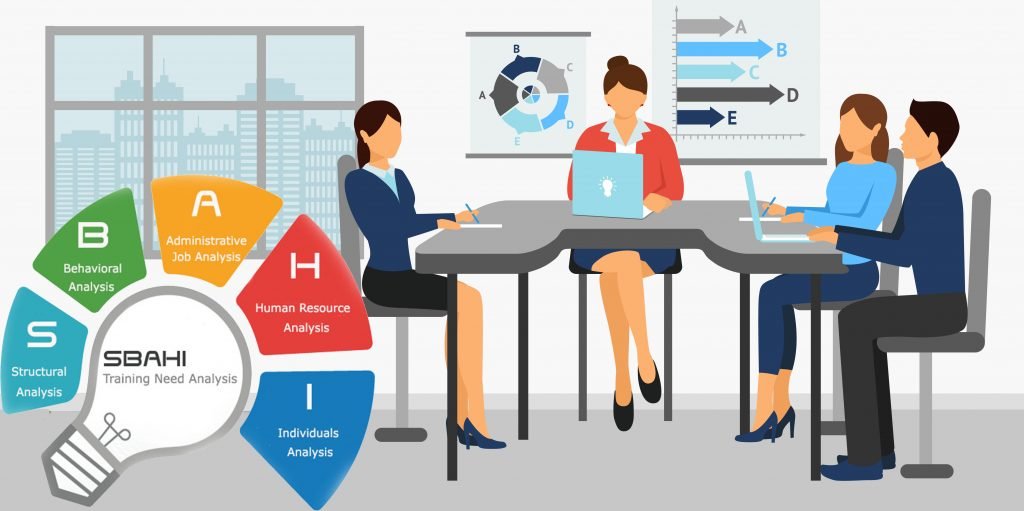Training Need Analysis
If you want to learn more about our training need analysis approach, you’re in the right place. Read to learn how we conduct training need analysis.

SBAHI Training Need Analysis
The training needs are: the range of changes to be made in the individual and related to his or her knowledge, skills, experience, behavior, and attitudes to make him fit for a higher position, or to perform the terms of reference and duties of his current job efficiently.
This defines the training requirement as the difference between what is and what it should be. In order to identify training needs, we must identify the skills or the ability to be changed or developed, and the target skills and the ability that should be reached after training. Taking into consideration that the gap between the statuesque and the target is the basis for knowing the level of training need we are looking to reach.
The process of identifying training needs is important and critical to the effectiveness of training programs for the following reasons:
• It is the basis for all elements of the training process, designing the training content, the activities, and evaluating the training program. The identification of training needs is a properly guided indicator of training in those sub-processes.
• It helps to focus on good performance and the primary objective of training.
• The absence of an inaccurate identification of training needs is a waste of effort, time and money.
Since the process of identifying training needs is not as easy as some would think, it is a structured survey work that is usually a collective collaborative effort by all the human force of the organization in order to find out the gap between the current situation and the target situation. This effort is structured in a form of program to identify the training needs of trainees.
We, at SBAHI, have developed our own methodology for identifying and analyzing the training needs of organizations in accordance with the following steps:
- Structural Analysis
- Behavioral & Climate Analysis
- Administrative Job Analysis
- HR Analysis
- Individual Analysis
Structural Analysis
Analyzing the organizational structure and how much does it fit the organization’s activities.
Behavioral Analysis
Analyzing the organizational behavior and its effect on both employee and customers to find out communication gaps.
Administrative Job Analysis
Analyzing job activities, tasks and job description to find out the needed skills and competencies.
HR Analysis
Analyzing HR data like turnover rate and employee complaints.
Individual Analysis
Analyzing personal and individual performance, skills and competencies








